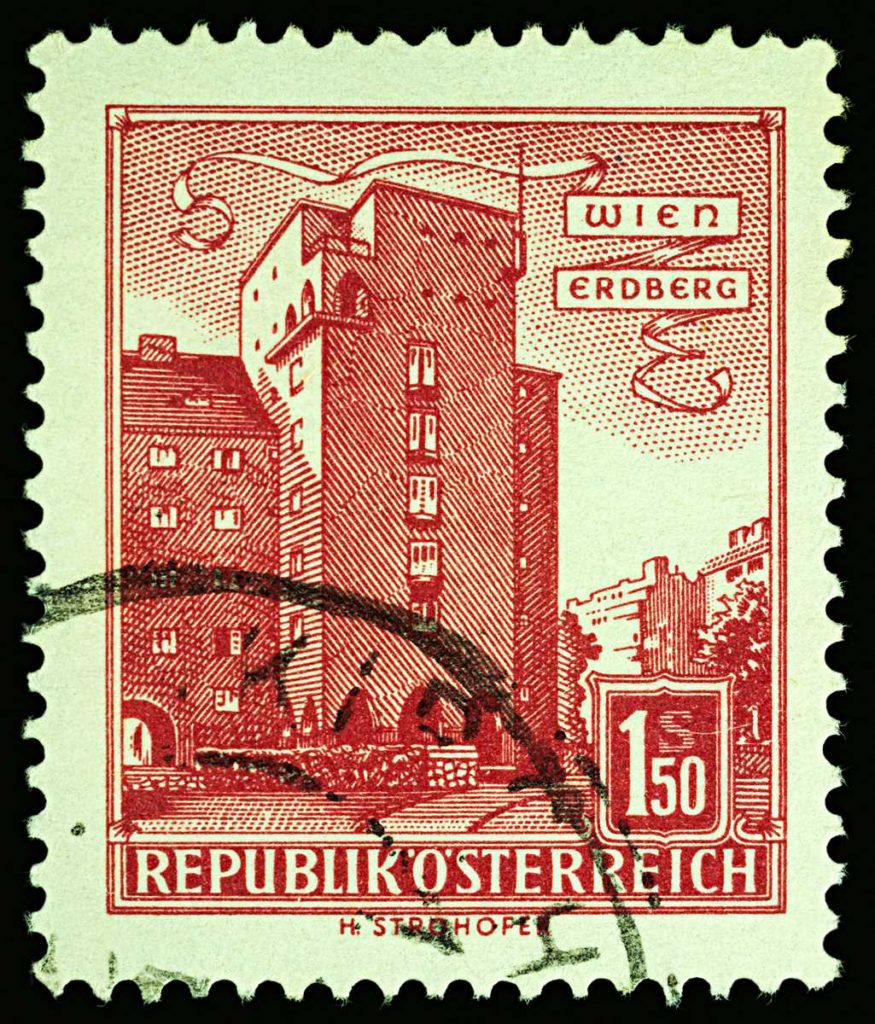Austrian postage stamps have, like the country itself, an interesting history since their beginnings in 1850.
At that time, the Austrian Empire, under the new Emperor Franz Joseph I, began issuing stamps featuring the national coat-of-arms. Later issues showed the Emperor himself. For the first several decades, Austrian stamps were in kreuzer, the unit of currency at the time (1 gulden = 60 kreuzer).
At the same time as Austria, the Kingdom of Lombardy-Venetia in what is now far northeastern Italy issued its own postage stamps, which were direct copies of Austrian Empire stamps but with the local unit of currency (1 florin = 100 soldi; in 1858, the centesimi was used instead).
From 1867 until 1874, the Austro-Hungarian Empire issued stamps for use in both Austria and Hungary, but in 1874 Austria began issuing its own stamps again. From 1879 until 1918, Austria issued stamps for Bosnia and Herzegovina as well.
Browse 1,852 current Austria stamps and postal collectibles for sale offers here
In 1899, Austria changed its monetary system, jettisoning the kreuzer and instead using krone, one of which was equal to 100 heller. Also that year, the Empire began experimenting with a new security feature that involved putting large bars of varnish over the stamp face. This lasted about 10 years; stamps from this time can be found both with and without the varnish, and both are considered collectible.
Austria established some post offices in the Ottoman Empire around the middle of the 1800s, and used special stamps in the area. Later Austrian post offices on the Greek island of Crete saw more postal collectibles created.
In 1918, two years after the death of Franz Joseph and in the aftermath of World War I, the Republic of German Austria was formed; stamps with Deutschösterreich overprints and, eventually, inscriptions were issued, though the name Österreich was used from 1922. Also in 1918, Italy began occupying two Austrian provinces, Venezia Giuliu and Trentino. Both had special postage stamps overprinted by the Italians, and both belong to Italy now.
See also: Poland rare stamps: buying and collecting Poczta Polska
Thanks to hyperinflation (leading to a 10,000 krone stamp, the highest-ever denomination of an Austrian postage stamp — but still nowhere near as rampant as Germany’s hyperinflation of the time), Austria changed their monetary system again in 1925: 1 schilling = 100 groschen.
In 1938, Hitler annexed Austria in the Anschluß and German stamps were used in Austria. After World War II, the occupying USSR reused Nazi stamps with Hitler’s face extravagantly blocked out with overprinted bars.
The modern Republic of Austria was soon established, and has been issuing a rather large number of stamps each year ever since. Vast varieties of commemorative stamps, maxicards, souvenir sheets, joint issues with other countries, and many other philatelic collectibles keep Austrian stamp enthusiasts quite busy, as the marketplace is chock full of interesting pieces at all times. In 2002, Austria (and its stamps) adopted the euro. Check our current selection here and check back often; new listings are added several times per day.










